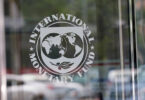ISLAMABAD (INP): The State Bank of Pakistan’s (SBP) primary goal, after the recent amendment in Section 4B of SBP Act 1956, is to achieve and maintain domestic price stability – inflation. It further states that the Bank shall also ensure the financial stability of the country as well as contribute to complementing the efforts for long-term economic growth and development, without compromising the primary goal. Before that, SBP had a dual mandate; to take on inflation and growth side by side, which not only divided focus but also compelled the Bank to make complex decisions. The impact of which would also be composite. However, now there is absolute clarity, said Dr. Farooq Arby, Director of Research at SBP.
He was speaking at a hybrid workshop on ‘Monetary Policy Framework in Pakistan and Recent Monetary Policy Stance of SBP organized by the Pakistan Institute of Development Economics (PIDE), Islamabad.
For instance, in times of pandemic, inflation took a dip, though large-scale manufacturing (LSM) also recorded negative growth. Nonetheless, SBP got space to support growth by dropping the policy rate from more than 13% to 7% only. This was one of the highest cuts in policy rates across the globe; equivalent to 625 bps points in total. Besides that, SBP also took other measures, such as Temporary Economic Refinance Facility (TERF), health sector schemes, etc. This explains SBP’s fire-fighting to support growth. However, with more clarity on the objectives, the Bank is expected to perform even better; the narrower the target, easier to manage, enunciated Dr. Arby.
Earlier, Dr. Sajjad Zaheer, Economist at SBP gave a detailed talk on the Monetary Policy Framework of Pakistan. After giving a general snapshot, he described in detail the framework, policy communication channels, monetary policy instruments, and their transmission mechanisms. He also explains why controlling inflation is the axis of the Bank’s efforts. High inflation makes it difficult for individuals and firms to efficiently plan their decisions to consume, save and invest; discourages investment because when firms are uncertain about the future worth of their money, they become reluctant to invest-low investment reduces the economy’s potential to produce in future; discourages long term contracts due to uncertainty; wastage of resources on frequent negotiations; diverts resources away from efficient production; undermines confidence in domestic currency; impacts more severely fixed income and low-income groups and redistributes wealth from savers to borrowers – mainly business community.
In contrast, low and stable inflation facilitates businesses in making sound investment decisions, maintaining the value of the domestic currency, and protecting the savings of the nationals. These, in turn, ensure stability in the value of the domestic currency and promote growth and job creation in the economy. Thus, price stability is consistent with the “other goals” in the long run – there is no trade-off between inflation and employment in the long run.
Though, there may be a short-run trade-off. For example, monetary tightening might help in controlling inflation but might cause unemployment to rise in the short-run, added Dr. Zaheer.
Earlier, the representatives from the SBP also apprised the participants that it was recently decided in SBP’s Monetary Policy Committee (MPC) to initiate engaging universities across the country on monetary policy, its framework, and different approaches. This would give a clear idea to young aspiring economists as to how the whole machinery around monetary policy functions. So, it was decided to kick-start the engagement program from PIDE – as it’s the epicenter of economic research in Pakistan. Dr. Nadeem ul Haque, Vice-Chancellor PIDE, towards the end of the workshop, offered SBP any assistance and collaboration regarding areas of mutual interest.





